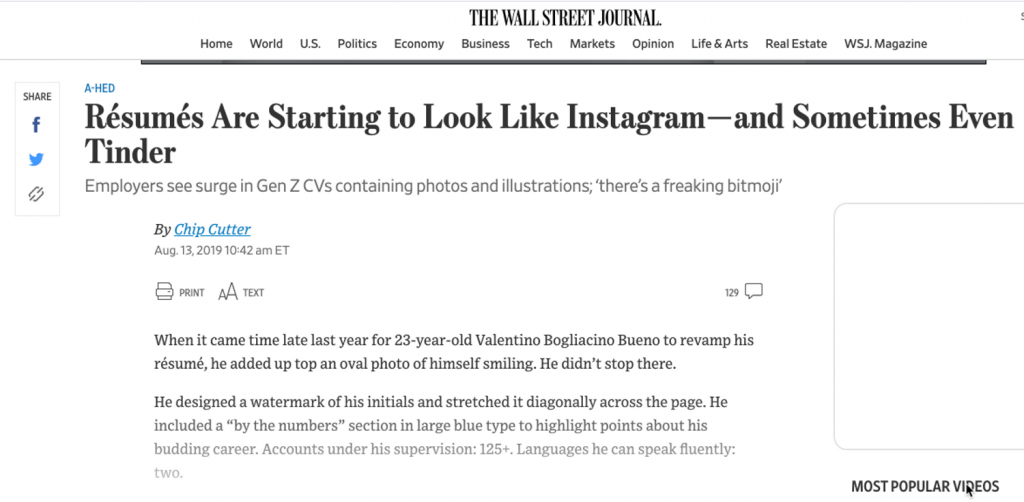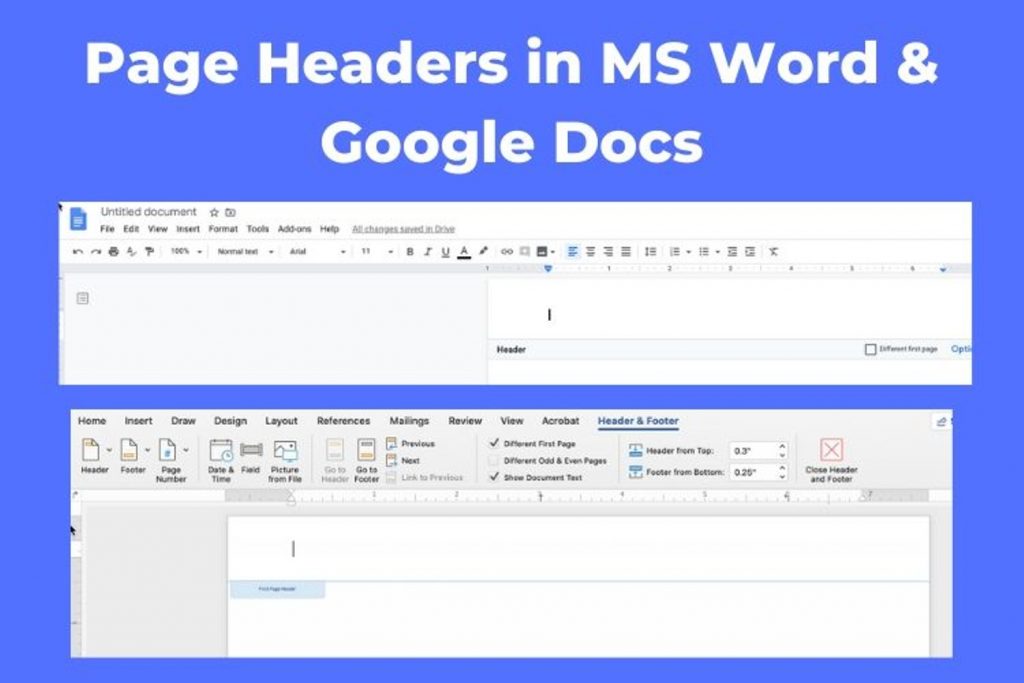
File Formats: .DOC, .DOCX, .TXT, .PDF??
There are many file formats to use when writing your resume. Let’s review the options and where to use them.
- DOCX – This is the modern file format used by Microsoft Word and Google Docs. Your master resume, the one you make all edits from that you are writing in this course, should be in this file format. This file format supports colors, lines, bullets, spacing, and other elements to make it look appealing.
- DOC – This is the older file format used by Microsoft Word and is much like the newer DOCX format. DOCX format has replaced it, so choose it instead.
- TXT – Also known as a ‘text file’ or ASCII file, TXT format is the most basic format of a document and removes all the page layout elements. This is useful for being read by an ATS and the file size is very small. If needed, you can always make one from your DOCX file with the ‘Save As’ option. RTF (Rich Text Files) are text files with some more layout options, you’ll only create one of them if you’re writing your resume in Microsoft Wordpad.
- PDF – Adobe’s Portable Document Format (PDF) is, essentially, a locked-down version of your resume that can not be edited by the reader and looks like it does when printed. This is the version you should share via email and online, but not for uploading to online job applications. You can generate a PDF from Word or DOCs
- Pages – A .pages file is created by Apple’s Pages app and, while it looks nice, it’s often not readable on other machines. If you create a resume in Pages be sure to export as a DOCX file for upload or convert to a PDF before sending it.
Advice on Naming Your Resume File
- Avoid naming your file just “resume” While this will work, a more descriptive name will prevent it from getting lost – either with a hiring manager or in your own files. We recommend naming your resume so that it includes your last name, first initial, and then the word ‘resume’. So instead of resume.docx it would be FirstInitialLastnameResume.docx. You can also add the year or month/year it was created to track changes.
- Make a backup copy of your resume This sounds difficult, but it’s not. Open your resume and save it again (‘save as’) as the same file name but with the word backup included (e.g. FirstIntialLastnameResumeBACKUP.docx). Place this file into a subfolder labeled ‘backup’, then close it. You won’t need it again unless you accidentally overwrite your original resume – then you’ll be glad you had it!
- Track your online submissions with filenames As you edit your resume to match keywords in job postings, you’ll want to make sure you keep track of what changes you’ve made. To do that, we suggest creating a subfolder with the name of the company you’re applying to. Then copy your resume into that folder. Make your edits on that copied document and save it. You’ll submit that copy to the job board or attach it to the email. Once you’ve submitted your application you can add the company name to remind yourself it’s been sent. (e.g. FILastnameResumeAmazon.docx)
- Email = PDF If you email a resume, print/save a PDF version of your resume into the company’s subfolder and send that instead of a Docx file. This will ensure that any text formatting does not change. If you are unsure how to generate a PDF file, check your Help section or search online.
Creating an Plain-Text ASCII File (Optional)
Why would you want a text-only (.txt) file copy of your resume? Not only are the file sizes much smaller and easier for ATS scanners to read (or ‘parse’ in tech-speak) but you can also see for yourself how it would look to a computer system. Seeing as the computer does is the really helpful part!
If you want to create a text file from your resume, all you will need to do is open your resume in Word or Docs > Choose Save As/Download and select “Plain Text (.txt)” as the file type.
See screenshot below for an example.

Below are examples of a resume that is converted into Plain Text from it’s Docx original so you can see the conversion results.
If you compare the two files below they are essentially the same except for one small difference – note that the “You’re #1” at the end is interpreted as “You?re #1”. If you’ve ever seen a broken headline online you’ll recognize that the computer has misread the contraction. This is common, so either avoid contractions in your resume or check your text file to make sure things encode as they should.
Basic Guidelines for Your Resume Document
Size: 8.5×11 Letter/A4
Margins: Use default 1 inch margins. If you need to, you can go to .75 inch margins but this might impact ATS compatibility.
Font Size: 10.5 to 12 point for body text. 14 -16 for title sections
Typeface Choice: There are no hard rules here except that you should stick to common choices found in business documents. Avoid novel typefaces such as Comic Sans or Papyrus.
Apple users need to be cautious and choose typefaces available across all platforms as some fonts are Mac exclusive
Typefaces commonly found in Resumes include:
- Arial
- Calabri
- Open Sans
- Times New Roman
- Helvetica
- Garamond
Question: "Should a resume be one page or two?"
The answer is “It depends”.
We will get into in more detail later in the course but if you CAN get one page of solid information that showcases you quickly and makes an impact- that’s the best way to go. For a more seasoned professional, two pages might be necessary and acceptable as long as it is well written information.
Should I use a resume template?

Microsoft Word and Google Docs both provide a variety of resume templates that make your resume visually appealing even if you’re not well-versed in graphic design or page layout.
But should you use them?
If you have mastered Word/Docs, then they can give you a head start, however, most of the template designs are not optimized for being read by a digital system, so there’s a chance that using them could result in your resume not getting through an Applicant Tracking System.
Our advice is to write in a traditional format first. After that’s completed then you can tackle a more advanced visual layout that you can give directly to others.
Another drawback to using templates: visual appeal is subjective. What you might think is a real winner, another person might regard as a poor attempt. It’s better to play it safe and choose a conservative style over a flashy one unless you’re a designer and know what works and what doesn’t in a visual medium.
In any case, do not use a template-based resume to apply for jobs online. Only use it in a person-to-person scenario.
In this course, we provide you with a master resume template document that you can use. It does not contain the elements that might confuse an ATS, so feel free to use it as a guide for your own resume.
Should I avoid online resume generators?
There’s a rule of data security that applies to most everything you find online that is free to use:
If it’s ‘free’ you are potentially the product not the consumer.
What does that mean? Simply put when a company offers to help you online for free, you have to consider why they’re doing it.
Often the site offering to compile your data into a resume or scan your existing resume to see if it is ATS-compatible is making money from that free service in some way. This can be something as benign as showing you advertising on their site, which is usually the case. Sometimes it is less innocent and your data could be used for other purposes that you inadvertently agreed to.
Our advice: Write your own resume and be a wise consumer online.
What about "infographic resumes"?
We are often asked about infographic resumes – resumes that are layed out to be visually appealing and stand out from the rest. We refer to them as “Networking Resumes” because that’s what they should be used for- networking.
You can use a graphical resume for person-to-person networking by email, print, or texting. They’re also great for use on LinkedIn, Instagram, and other personal web-presences where they can be shared and downloaded.
BUT if you have a graphical resume created for you or you create one yourself do NOT use them to apply for jobs. Stick to a traditional format.

What is a Page Header and a Resume Header?
In Microsoft Word or Google Docs, a document has an optional space at the top and the bottom of each page called the Page Header and the Page Footer.
The Page Header is frequently confused in discussion with your Resume Header where you have your name, email, and phone number.
When writing a resume, you may be tempted to place your Resume Header into the Page Header – you must NEVER do this. It may seem like you’re saving space by using it, but it is a bad idea.
Why? Because resumes today are almost always scanned into an Applicant Tracking System (ATS) which do not look at the page header area. This means if you use the Page Header space and upload your resume for a job, the information listed there is not included. So if your name and contact information are in this page header they can get lost and the system might throw your resume out.

Worse yet, the hiring manager could get the resume for the perfect candidate but not know their name or how to contact them!
Below are screenshots of the Page Headers in MS Word and Google Docs for reference.
Remember – AVOID THIS PART OF THE DOCUMENT!
Below is a sample resume you can use as a basis for your own.
Take note of how your eyes land on each section of the resume and how it follows a logical flow.
You’ll want to make sure you write your resume to balance being concise and conveying the most essential information with the need to make the document easy for the reader to skim.
ASSIGNMENT #1.2
- Create a blank document in MS Word or Google Docs that will become your resume.
Refer to the provided template and the content in this course if you’d like guidance on layout.